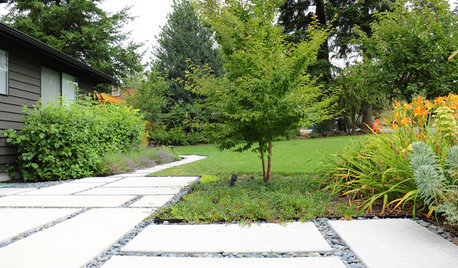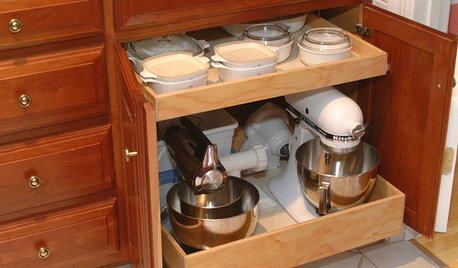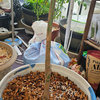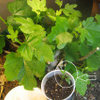Citrus & Avocado Pre-Order for Canadian Gardeners for 2021
Hello Canadian Citrus Fans,
I thought you would be interested to know that we have launched our Citrus Pre-Order at Phoenix Perennials for the upcoming year. This time around we have added avocados, a variegated fig, and some olives in case your subtropical proclivities extend beyond the Rutaceae. Full details are below or at www.phoenixperennials.com.
Cheers and happy growing,
Gary
The Great Citrus & Avocado Pre-Order 2021
53 different citrus, 12 different avocado plus a variegated fig and five olives for Canadian gardeners!
We are excited to offer one of our largest selections of citrus and likely one of the largest ever offered in Canada. Citrus are a relatively easy-to-grow and rewarding group of plants that can be grown by all Canadians as long as you have a a sunny outdoor spot for summer and a good, bright place indoors for the winter. Beyond classic favourites like Meyer lemons, navel oranges, blood oranges, key limes, and Thai limes, we also have a number of cultivars of mandarins, kumquats, yuzu, and sudachi that are completely hardy in zones 7 and 8. They can be grown outdoors year round in coastal BC in protected microclimates.
We are also pleased to offer our largest selection ever of avocados and to include a cool variegated fig and five top notch olive cultivars. Without further ado, you’ll want to start perusing our selection and making your choices. Please let all of your friends know so we can keep presenting a wider and wider selection each year.
Explore our Full List of Citrus
In addition to the hardy cultivars, we have a full range of classics and rare cultivars for your citric pleasure. Here is our full selection of citrus for 2020:
AUSTRALIAN FINGER LIME – Microcitrus australasica – Foodies take note! Dark purple fruits hold green “citrus caviar” – juicy capsules bursting with lemon-lime flavour. Zone 10.
BERGAMOT – Citrus bergamia – Tea lovers take note! The rind is famed as the flavouring for Earl Grey and Lady Grey tea. Zone 9.
CALAMONDIN – Citrofortunella mitis ‘Variegata’ – Known as calamondin, calamansi, or Philippine lime, this heavy-fruiting hybrid is most often used as an ornamental in North America. But amongst Filipinos this is a beloved fruit used throughout their cuisine in fish, chicken, and pork dishes, with spring rolls and dumplings, and in beverages, marmalades, and desserts. This is the variegated form. Zone 10.
CALAMONDIN – Citrofortunella mitis – Known as calamondin, calamansi, or Philippine lime, this heavy-fruiting hybrid is most often used as an ornamental in North America. But amongst Filipinos this is a beloved fruit used throughout their cuisine in fish, chicken, and pork dishes, with spring rolls and dumplings, and in beverages, marmalades, and desserts. Zone 10.
CITRON – Citrus medica ‘Assads’ (Kosher Etrog) – Fragrant lemon-like fruit with thick peel is used for the Jewish Feast of the Tabernacles (Sukhot). ‘Assads’ is a selection from Morocco dating back at least 2000 years. Our plants have been grown only from own-root cuttings or seed for 2000 years and so are Kosher. Zone 9.
CITRON – Citrus medica var. sarcodactylis ‘Buddha’s Hand’ – A striking oddity like a lemon with fingers. Use the rind like orange peel as a flavouring. Zone 9.
GRAPEFRUIT – Citrus ‘Cocktail’ – Very juicy, bright yellow fruit. Sweet-tart flavour. Actually a hybrid of a pummelo and a mandarin but most similar to a grapefruit. Zone 9.
KUMQUAT – Fortunella japonica ‘Centennial’ – POSSIBLY HARDY. Variegated version of the ‘Nagami’ kumquat. Eat the yellow and green striped fruits peel and all. Potentially hardy in coastal BC. Zone 8-9?
KUMQUAT – Fortunella japonica ‘Marumi’ – Similar to the ‘Nagami’ except with much smaller leaves and more round shaped fruit. The peel is also slightly thinner and sweeter. Diminutive and highly ornamental, the Marumi is rarely found outside of China and Japan. Zone 9.
KUMQUAT – Fortunella japonica ‘Meiwa’ – Fruit is more round than ‘Nagami’, with a bit more sweetness. Good candied or in marmalade. Produces best in hotter microclimates. Zone 9.
KUMQUAT – Fortunella japonica ‘Nagami’ – HARDY. Kumquats are eaten peel and all for a sweet-tart combo. Heavy producer of small oblong fruits. Hardy in coastal BC. Zone 8.
KUMQUAT – Fortunella japonica ‘Nordmann’ Seedless ‘Nagami’ – HARDY. Kumquats are eaten peel and all for a sweet-tart combo. Heavy producer of small, seedless oblong fruits. Hardy in coastal BC. Zone 8.
KUMQUAT – Fortunella obovata ‘Fukushu’ (Changshou) – Considered by some to be the best of the kumquats for eating with large fruit with great tart/sweet contrast in flavour. Lovely rounded leaves.
LEMON – Citrus limetta ‘Pomona’ Sweet Lemon – Eureka-type but with less thorns. Sweet, juicy fruits with low acid. Potentially hardy in coastal BC having survived freezes to -9 C. Zone 8b-9a?
LEMON – Citrus limon ‘Eureka’ – Fruit quite similar to ‘Lisbon’ with less to few thorns and more open foliage with classic tart and acidic lemon flavour and few seeds. Good year-round producer. Somewhat more resistant to cold than ‘Eureka’ once established. Zone 9.
LEMON – Citrus limon ‘Genoa’ – Similar to the familiar ‘Eureka’ lemon but hardier. An Italian cultivar with vigorous, compact growth perfect for container culture, great production, and good cold tolerance. Zone 9.
LEMON – Citrus limon ‘Lisbon’ – One of the most popular of all lemons with classic acidity and flavour and few seeds. Fruit quite similar to ‘Eureka’. Thornier, dense foliage. Good year-round producer and beautiful purple new growth. Somewhat more resistant to cold than ‘Eureka’ once established. An heirloom cultivar likely from Portugal. Zone 9.
LEMON – Citrus limon ‘Santa Teresa’ Feminello – The most popular of Italian lemons. Highly productive with medium sized fruit with a characteristic nipple at the end. High acid content perfect for making limoncello. Zone 9.
LEMON – Citrus limon ‘Variegated Pink’ (Eureka) – Distinctive green and yellow variegated foliage and fruit are highly ornamental. Lemons have pink flesh, clear juice and acidic lemon flavour. Fuchsia coloured new growth and flower buds. Zone 9.
LEMON – Citrus New Zealand ‘Lemonade’ – Mixologists take note! A sweet, juicy lemon hybrid with a distinct flavour of lemonade! Black branches. (C. limon x C. reticulata) Zone 9.
LEMON – Citrus x meyeri ‘Improved Meyer’ – One of the easiest and most popular citrus to grow. Can bloom and fruit year-round. Deep yellow lemons are very juicy and less acidic than regular lemons with nice sweetness. A hybrid cross of C. limon (lemon) and C. reticulata (mandarin orange). Zone 9.
LIME – Citrus aurantifolia ‘Mexican Key Lime’ – The classic flavouring for key lime pie. Aromatic, flavourful, greenish-yellow fruit. Easy to grow. Can produce year-round. Zone 10.
LIME – Citrus aurantifolia ‘Thornless Key Lime’ – The classic flavouring for key lime pie. Aromatic, flavourful, greenish-yellow fruit. Easy to grow and no thorns! Can produce year-round. Zone 10.
LIME – Citrus hystrix Makrut/Kieffer Thai Lime – Foodies take note! Very fragrant leaves and bumpy fruit are both used in Asian cooking. This tree will revolutionize your stir fries and curries especially Thai, Lao, Cambodian, Vietnamese, Indonesia, Burmese, Malaysian, and South Indian dishes. Zone 10.
LIME – Citrus latifolia ‘Bearss Lime’ – Large limes almost as big as a lemon, seedless, very juicy. Zone 9.
LIME – Citrus latifolia ‘Tahitian’ – A nearly seedless lime with thin skin, good juiciness and acidity and true lime flavour producing good crops. Zone 9.
LIME – Citrus limettioides ‘Palestinian Sweet Lime’ – Round, medium-sized juicy yellow fruit. Has less sugar and acid than the Bearss Lime. Similar to sweet limes from Mexico, which also originated from the Mediterranean. With its mild flavor and few seeds, it makes a refreshing, cooling drink. Zone 9.
LIME – Citrus x limonia ‘Rangpur’ Red Lime – Tart reddish orange fruit is used like lime although it is a sour Mandarin from India from a cross of a mandarin and a lemon often called a Rangpur lime or a red lime. The overlap of prolific fruit and purple tinged blooms make this a wonderful ornamental tree. Popular in mixed drinks or simply sliced for iced tea. Zone 9.
LIMEQUAT – Citrofortunella ‘Eustis’ – This hybrid of a lime and a kumquat has prolific crops of flavourful, oblong, lime-like fruit on lovely ornamental plants. Zone 9.
MANDARIN – Citrus reticulata ‘California Honey’ – A real collector’s item for citrus fans, ‘California Honey’ is not commercially grown so to taste this amazing cultivar, you’ll have to grow it yourself. It ranks as one of the best tasting of all mandarins with great, juicy flesh, intense sweetness, fragrant aroma, and a flavour like spiced honey. Zone 9.
MANDARIN – Citrus unshiu ‘China Satsuma S-2’ – Nice round, sweet, easy-to-peel fruit and good cold hardiness. Introdcued from China in the 1990s. Zone 9.
MANDARIN – Citrus unshiu ‘China Satsuma S-6’ – Nice round, sweet, easy-to-peel fruit. Introdcued from China in the 1990s. Zone 9.
MANDARIN – Citrus clementina ‘Clementine’ (Algerian tangerine) – The popular ‘Clementine’ ripens in the spring with small, sweet fruit with a bright flavour. Provide a pollinator for best fruit production. Good cold tolerance. Zone 9.
MANDARIN – Citrus reticulata ‘Dancy’ – The best known tangerine ripening in winter and popular at Chinese New Year. The deep orange red skin is thin and easy to peel. The fruit is sweet and juicy. Fine foliage and nice, upright habit. Some cold tolerance. Zone 9.
MANDARIN – Citrus reticulata ‘Gold Nugget’ – POSSIBLY HARDY. Fruit is seedless, richly flavoured and easy to peel. Remarkably frost tolerant trees begin bearing in March. Unlike many other mandarins, fruit holds well on the tree through summer. Said to be one of the best tasting mandarins in the world. Zone 8b/9.
MANDARIN – Citrus reticulata ‘Kinnow’ – A heavy-producing, spring-ripening cultivar with vigorous, attractive upright growth, lovely willow-like foliage, and sweet, juicy, easy-to-peel fruit though it does have some seeds. A major commercial variety from the Punjab and Pakistan where trees can produce 1000 fruits each! Zone 9.
MANDARIN – Citrus kinokuni ‘Kishu’ – An early-ripening Japanese cultivar that produces before ‘Owari’. The golf ball-sized fruit is complex in flavour with great sweetness and a touch of tart. It is also seedless and easy to peel. The fruit is soft and supple so it doesn’t travel well and thus is not commercially grown. The only way to taste the deliciousness of ‘Kishu’ mandarins is to grow them yourself! Zone 9.
MANDARIN – Citrus reticulata ‘Kuno Wase’ – Abundant early-ripening crops of sweet, thin skinned, easy to peel, bright orange fruit that are great for fresh eating. Good cold tolerance. Zone 9.
MANDARIN – Citrus reticulata ‘USDA 88-2’/Lee x Nova/’Super Nova’ – An early-ripening seedless mandarin with medium to large, rich, juicy, and tasty fruit. Easy to peel. Zone 9.
MANDARIN – Citrus unshiu ‘Owari’ – HARDY in coastal BC. Harvest great crops of very sweet satsuma mandarins from Dec-Feb. Zone 8.
MANDARIN – Citrus reticulata ‘Pixie’ – Small, sweet, seedless mandarins are easy to peel. Requires less heat to ripen than other varieties. Zone 9.
MANDARINQUAT – Citrofortunella ‘Indio’ – A kumquat-mandarin hybrid with large, pear-shaped fruit with sweet peel and tart flesh eaten together for a cool taste sensation. Zone 9.
NAVEL ORANGE – Citrus sinensis ‘Fukumoto’ – Early ripening navel orange with reddish-orange skin and sweet, juicy flavour. Less vigorous, compact growth so good for containers. Zone 9.
NAVEL ORANGE – Citrus sinensis ‘Washington’ – California’s famous winter-ripening navel orange perfect for orange juice and fresh eating. Sweet, seedless fruit ripens in ten months. A great variety for indoor growing. Zone 9.
BLOOD ORANGE – Citrus sinensis ‘Tarocco #7’ – Largest of the blood oranges and among the most delicious. Deep orange skin, deep red flesh. Sweet and tart. Nearly seedless. Cool winters bring on the deepest red colours of the flesh. Zone 9.
SOUR ORANGE – Citrus myrtifolia ‘Chinotto’ – Dense foliage, profuse fragrant flowers, bright orange fruit used for candying, marmalades or juice. Zone 9.
SOUR ORANGE – Citrus x aurantium ‘Seville’ – Tart fruit perfect for marmalade and juice. Tons of fragrant flowers, beautiful dark green foliage. More cold hardy than normal oranges. Zone 9.
TANGELO – Citrus x tangelo ‘Minneola’ – A mandarin-grapefruit hybrid that produces deep reddish-orange, bell-shaped fruit in winter with a rich tangerine-like flavour, especially if fruit are left to hang and fully ripen. Zone 9.
TANGELO – Citrus x tangelo ‘Pearl’ – A mandarin-grapefruit hybrid that produces deep orange, bell-shaped fruit in winter with tender, juicy fruit with a pleasant sweetness and more grapefruit-like flavour than other tangelos. Nice willow-like foliage. Zone 9.
TANGELO – Citrus x tangelo ‘Wekiwa’ – A mandarin-grapefruit hybrid that produces abundant, large, delicious fruits that look like a small grapefruit. They are sweet with a hint of tartness with amber-pink flesh. Best for fresh eating or juice. Trees remain compact but with great production. Zone 9.
TRIFOLIATE ORANGE – Poncirus trifoliata ‘Monstrosa’/’Flying Dragon’ – An extremely hardy, ornamental citrus with intriguing branches contorting into zigzags and corkscrews. Lightly fragrant flowers produce small orange fruit in the fall which are gorgeous through winter. The fruit are very acidic and seedy but are edible with a lemony flavour. Use them to make marmalade. Zone 5.
YUZU – Citrus junos (Yuzu Ichandrin) – HARDY. Foodies take note! Prized in Japan for flavouring dishes and desserts, for juice and for preserves. Abundant crops of 3″ fruits with a tasty, lemon-lime flavour. Hardy in coastal BC potentially to -18 C. Zone 7.
SUDACHI (HYBRID YUZU) – Citrus sudachi (Sudachi Ichandrin) – HARDY. Foodies take note! A cross between a mandarin and yuzu prized in Japan and Peru to flavour soups, fish dishes, desserts, and ponzu sauce. Hardy in coastal BC. Zone 7.
Avocado
Meet the Avocados
To get fruit you will need at least one A type and one B type. They will pollinate each other and you will get fruit on both plants.
A Type Avocados
‘Gwen’
- Gwen naturally grows about 10-15 feet in height, but can be kept even smaller as the tree lends itself easily to pruning since it has small limbs.
- Fruit is similar to the ‘Hass’ variety, but slightly larger.
- Oval and plump with thick green skins that have a pebbled texture and turn dull green when the fruit is fully ripe.
- Creamy gold-green flesh around a small to medium seed.
- Medium to large fruit with nutty, buttery flavour.
- Keep above 0o C (32o F).
- A Type
‘Hass’
- The largest of the commercially grown avocados. Delicious flavour, high oil content.
- Large, oval fruit with green, pebbly skin turning black when ripe.
- Fruit size 10-12 oz.
- Creamy gold-green flesh around a small to medium seed.
- Vigorous grower that will need some space.
- Keep above 0o C (32o F).
- A Type
‘Lamb Hass’
- A cross between ‘Hass’ and the dwarf ‘Gwen’ avocado yielding plants with an upright, compact habit.
- High yields of good quality ‘Hass’-like fruit with black skin ripening over a longer period than ‘Hass’.
- Fruit size 10-16 oz.
- Keep above -1o C (30o F).
- A Type
‘Little Cado’ (Wurtz Avocado)
- Tasty, green-skinned fruit with medium-thin skin.
- Fruit size 8-14 oz.
- Compact habit to 10-15 feet.
- Keep above 0o C (32o F).
- A Type
‘Mexicola Grande’
- Easy to peel, paper-thin skin and creamy flavour.
- Ripens from late summer through mid-winter.
- One of the most cold hardy avocados to -7o C (20o F).
- A Type
‘Pinkerton’
- Green fruit with medium pebbly skin and great flavour.
- Heavy, early producer on young plants.
- Fruit size 14-16 oz.
- Ripens November -April.
- Medium spreading tree
- Cold hardy to -2o C (28o F).
- A Type
‘Reed’
- Excellent, large, green, round fruit with great flavour.
- Fruit size 12-18 oz — some of the largest fruit of any avocado!
- Medium-sized, upright tree.
- Keep above 0o C (32o F).
- A Type
‘Stewart’
- One of the most cold hardy varieties.
- Mexican avocado with pear-shaped fruit with smooth, thin, dark skin and a nutty flavour.
- Fruit size 6-10 oz.
- Spreading, strong tree.
- Cold hardy to -7o C (20o F).
- A Type
B Type Avocados
‘Bacon’
- Tasty green fruit with medium-thin skin.
- Fruit size 10-12 oz.
- Ripens December – January.
- Medium upright tree.
- Cold hardy to -3 to -5o C (23-26o F).
- B Type
‘Jim Bacon’
- Similar to Bacon Avocado.
- Tasty green fruit with medium-thin skin.
- Fruit size 10-12 oz.
- Medium upright tree.
- Ripens December – January.
- Cold hardy to -3o C (26o F).
- B Type
‘Sir-Prize’
- A Hass type avocado with larger fruit and more productive trees.
- Tasty green fruit with black skin.
- Fruit size 10-20 oz.
- Fruit does not oxidize when cut or kept refrigerated.
- Upright tree.
- Ripens 4-6 weeks earlier than Hass in winter.
- Hardy to -1o C (30o F). More cold tolerant than Hass.
- B Type
‘Zutano’
- Good variety in relatively low temperatures.
- Green fruit, medium-thin skin.
- Fruit size 10-12 oz.
- Ripens November – January.
- Upright tree.
- Used as a pollinator for Hass Avocado in orchard settings.
- Cold hardy to -3 to -4o C (25-26o F).
- B Type
A Variegated Fig and Five Olives
Ficus carica ‘Panache’ – Tiger Fig
- A beautiful ornamental and edible fig with green and yellow striped fruit.
- Fruit has a strawberry red interior with sweet flesh.
- Fruit is very late to ripen requiring heat, sun, and a long season. Fruit may not ripen in coastal BC unless planted in the hottest of locations such as up against a south-facing wall or grown in a greenhouse.
- Trees grow up to 12 feet tall.
- Zones 7-10
Olea europaea ‘Chemlali’
- Commonly grown in Tunisia and also known as ‘Chemlali de Sfax’.
- High yields of top quality, small, tasty, burgundy fruit. The fruit and oil has a mild fruity flavour.
- Begins to bear fruit early on young plants.
- Ornamentally beautiful with erect growth and weeping canopy.
- Self-fertile. The presence of a different cultivar will increase yields.
- Zone 8. Hardy to -12o C (10o F). Good cold hardiness. Requires excellent winter drainage in a warm microclimate if growing outside in coastal BC.
Olea europaea ‘Frantoio’
- The most important olive for Tuscan olive oil.
- High yields of top quality, small to medium-sized, purple-black fruit. The fruit and oil has fruity and nutty flavours.
- One of the hardiest of olives and the hardiest self-fertile cultivar. The presence of a different cultivar will increase yields.
- Attractive silvery to blue-green, willow-like foliage.
- Zone 8. Hardy to -12o C (10o F). Requires excellent winter drainage in a warm microclimate if growing outside in coastal BC.
Olea europaea ‘Leccino’
- An important olive for making Tuscan olive oil.
- High yields of top quality, medium to large, early-ripening, burgundy-black fruit. The fruit and oil has a sweet flavour.
- Likely the hardiest of all olives.
- Requires a pollinator such as ‘Frantoio’.
- Attractive weeping habit.
- Zone 8. Hardy to -12o C (10o F). Requires excellent winter drainage in a warm microclimate if growing outside in coastal BC.
Olea europaea ‘Manzanillo’
- The most important olive for Spanish olive oil.
- High yields of top quality, medium to large, green fruit. Great quality flesh and easily removable pits for fresh eating. High oil content.
- Attractive bright green foliage.
- Requires pollination by a different olive cultivar.
- Zone 8. Possibly hardy to -12o C (10o F) but not as hardy as ‘Frantoio’. Requires excellent winter drainage in a warm microclimate if growing outside in coastal BC.
Olea europaea ‘Sevillano’
- Very large, bluish black, early-ripening fruit. Low oil content. Perfect for brining, pickling and eating.
- Smooth, buttery texture. Flesh separates from pits easily. Great for stuffing.
- Used to make Sicillian style salt brine cured olives and a leading canning olive.
- Large, reliable yields.
- Self-fertile. The presence of a different cultivar will increase yields.
- Zone 8. Hardy to -11o C (12o F). Requires excellent winter drainage in a warm microclimate if growing outside in coastal BC.
More information at www.phoenixperennials.com.
















Related Discussions
Avocado: Sharwil!
Q
Citrus for Canada! Phoenix Perennials' new citrus list for 2018.
Q
Citrus for Canadian Gardeners - Pick-Up or Shipping Across Canada!
Q
What's For Dinner #389....2021
Q